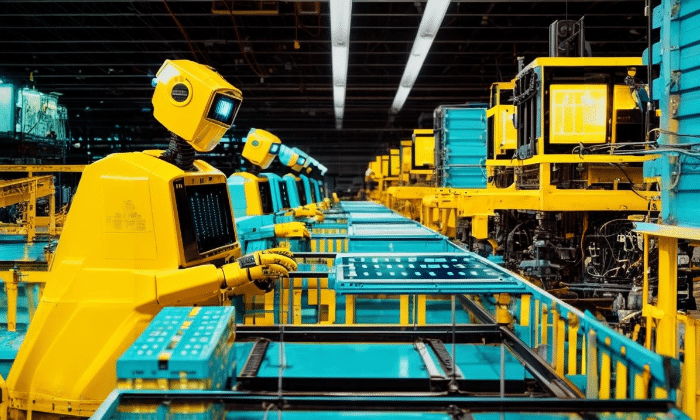Key Takeaways
- GenAI adoption requires both cultural and technical transformation
- Leadership must drive strategic alignment and investment
- Encouraging experimentation is essential to uncover scalable value
- Rethinking data culture is critical to unlocking GenAI potential
- Balancing innovation with caution reduces risk and accelerates adoption
Adopting GenAI isn’t just a technical upgrade, it’s a cultural shift. A certain mindset needs to be embraced that can ease the tension between those who would blaze ahead and others who fight change.
This post explores strategies for cultivating a GenAI-ready company culture, so you can better harness the power of GenAI to drive innovation – while reducing costs and mitigating risks.
Begin any cultural shift with leadership
While individual contributors quickly grasp the potential of GenAI to boost productivity in daily workflows, the complexities in building enterprise-wide applications require a more strategic approach. The cultural shift must therefore begin with leadership and address key concerns:
- Strategic alignment: Too few organizations tightly align AI initiatives with broader business objectives. So before embarking on a GenAI journey, align senior stakeholders around an implementation strategy
- Investment commitments: Whether you build or buy, GenAI capabilities come with significant cost—both financial and in training time. Leaders must be willing to invest
- Value propositions: Stakeholders must be convinced of the strategic value and long-term benefits of GenAI. So leaders must measure and communicate value and ROI to gain wider adoption and organizational support
- Risk mitigation: Leaders must ensure the company culture is one that implements measures to safeguard sensitive information and ensure the accuracy and reliability of GenAI outputs
Encourage a culture of experimentation
GenAI enhances an organization’s ability to innovate. However, this requires a willingness to explore the possibilities. So while it is important to consider and communicate ROI, that should not become an obsession that stifles experimentation. Given the nascent nature of AI, quantifying the exact benefits can be challenging. There must be balance.
You need to first play with the technology to see what it can do. Then you can figure out whether your use case works and can scale. There are ways to reduce risk with such exploration, which I’ll discuss shortly. But your company culture must enable openness, not block it, to succeed in GenAI.
Drive adoption with in-house initiatives
For more conservative organizations or those struggling to quantify the value of GenAI, trials and cross-functional working groups can be highly effective. By bringing together representatives from different teams, including tech, IP, and legal, organizations can promote collaboration and explore potential applications. Small, isolated proof-of-concept projects in locked-down environments offer a low-risk approach to experimenting with GenAI, reduce upfront investment, and can quickly demonstrate value.
To maximize the impact of these initiatives, involve a broad range of stakeholders early on, be transparent about the process, and spread the word as quickly as possible. Use GenAI showcases to have teams that leverage GenAI demonstrate key advantages and share knowledge. Having departments present different GenAI strategies is a really engaging way to do training. At KX, our monthly ‘AI in marketing’ showcase helps teams share use cases and lessons learned. It’s an engaging and low-cost form of internal enablement and, as a Data Scientist, it is always interesting to see how different functions are approaching /using GenAI to solve their problems.
Rethink data culture for the GenAI era
While there’s no need to overhaul existing data pipelines that work well already, it’s wise to evaluate them and identify areas for improvement. By challenging assumptions and revisiting your cultural approach to data, you can unlock the full potential of GenAI. Fail to do so and you may find GenAI experiments don’t work as expected.
Notably, be aware if your data culture hasn’t considered unstructured data until now, because traditional approaches that are perfect for discriminative AI workflows may not work well for GenAI. A willingness to reframe how you work – and that this can be a significant undertaking – may be required to position yourself for success.
Exercise caution when it really matters
While a culture of innovation can be beneficial, it’s equally important to leave space for caution when dealing with sensitive information and rolling out new tech. Robust data sources, standardized processes, and human oversight are crucial to ensure the reliability and accuracy of GenAI systems. Even the most agile company must recognize the danger of fragmented data sources and poor-quality data; and any willingness to experiment must be balanced by a willingness to deal with the risks of hallucinations, biased outputs, or overfitting
You’ll also find GenAI tends to split between efficiency use cases (creating a culture of using AI to drive efficiency and productivity gains) and increasing customer-facing value. Should your culture be geared toward getting things into the wild as soon as possible, consider prioritizing internal applications instead. The stakes, risks, and costs are lower, and you’ll learn from experience, which will be beneficial when you do later roll out external projects.
Be honest and make deliberate choices
Ultimately, the successful adoption of GenAI requires a clear understanding of your organization’s culture and strategic goals. And that requires you to be honest about the organization you are – or the one you want to become. While every company can benefit from GenAI, the pace and scale of implementation may vary depending on the factors discussed so far.
That said, there are commonalities, whether or not your organization has a culture of cautiousness. Striking a balance between caution and velocity can mitigate risks, drive efficiency, and unlock new opportunities. Deliberate planning, targeted experimentation, and continuous learning will help you shape your company’s culture and embrace the value that GenAI can bring.
For more information on what it takes to build a successful AI program, read our AI factory 101 series. Discover why KDB.AI is a crucial part of the AI factory.








